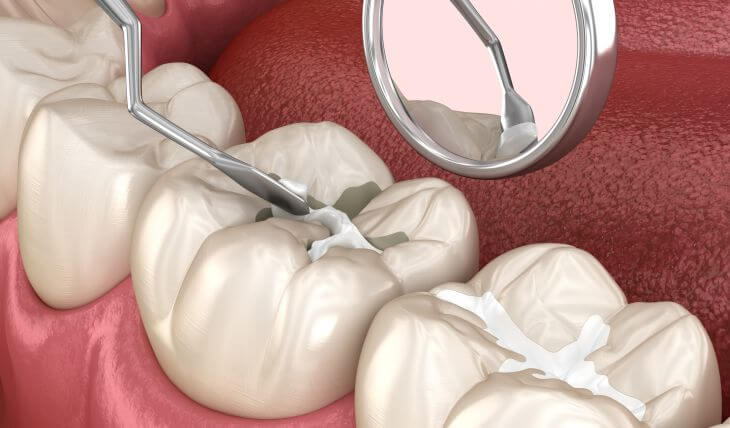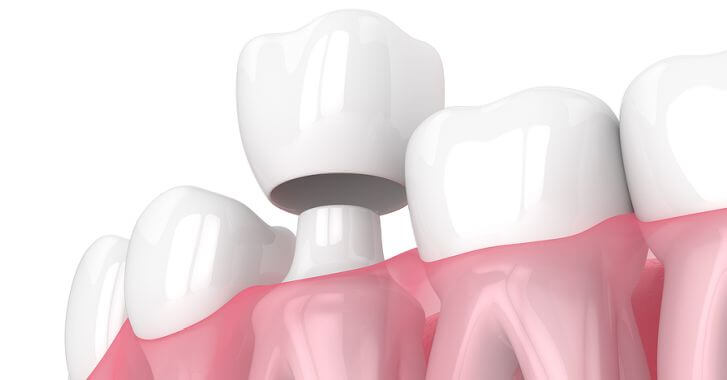How Long Does a Filling Take to Complete?

Cavities or caries are small pockets of tooth decay. Children are especially prone to cavities, but anyone can experience tooth decay. To stop the damage to the tooth, cavities need to be removed, then filled to seal the tooth surface and protect it from further decay or damage. If you have a cavity that needs a filling, you may wonder, “How long does a filling take to complete?” Here is what you need to know about cavities and dental fillings, including how long it takes to get a filling.
What Is a Cavity Filling?
Bacteria feeding off food debris on the teeth can cause tooth decay or cavities. The acid released by the bacteria when consuming food, especially sugars, can create small holes in the tooth enamel. The decay continues to eat away at the enamel and tooth material – there is no cure for tooth decay except removing the decay. A cavity filling is the best way to stop tooth decay and protect the tooth from further damage.
A cavity filling treatment removes the pocket of tooth decay by drilling out the material and kills any bacteria in the hole created by the decay. The hole is filled with dental material – composite resin or amalgam (metal filling) are popular options for fillings. Most kids will need fillings for cavities and adults may also have an occasional cavity that needs to be removed.
How Long Does It Take to Get a Filling?
If you have a cavity, it can usually be removed and filled in one dental visit. This is a routine procedure that does not require extensive dental work. Small cavities may be filled at the same time as a dental checkup – if the dentist has time, they may suggest filling the cavities right after the dental exam to save time for them and the patient.
In most cases, a cavity filling can be performed in less than an hour. The exact length of time depends on the size of the cavity, where it is located and what type of filling material is used to restore the tooth. A small cavity on one of the front molars can take less time than a larger cavity on a back molar – but both should be able to be completed in less than an hour unless there are complicating factors.
What to Expect During a Cavity Filling
Each step of the cavity filling procedure can impact how long it takes. The first step is to numb the tooth. A local anesthetic injection is used to numb the tooth. Larger molars may take longer to become numb, and each patient may need different amounts of anesthetic to become numb. The dentist or dental assistant will allow the aesthesia to work for several minutes before checking if the area is numb; if it is still not numb, another injection may be performed, which can delay starting the procedure.
The second step is removing the tooth decay. The tooth has been numbed, so there is no pain with this procedure. In most cases, the decay can be removed in a few minutes using a dental drill or laser. It is important to ensure all the decay is gone and that the tooth surface is disinfected before it is filled.
Amalgam or metal fillings were once the most common material used for restoring teeth after a cavity was removed. Due to the mercury in amalgam and the appearance of metal fillings, many patients and dentists prefer to use metal-free fillings like composite resin. To use white fillings, the cavity space is etched using a special dental fluid to allow the composite resin to adhere to the tooth. The composite filling is like a putty, which is applied to fill the hole and smoothed before it is cured with a special light.
Once the filling is hardened, the tooth’s surface must be polished. This ensures the tooth will look natural and that it will be comfortable when biting. The dentist or dental assistant may have you bite down on special dental paper to ensure the cavity repair is smooth and not interfering with your bite alignment.

Recovery from a Cavity Filling
How long does a cavity filling take? You can expect to be done with one filling in less than an hour – in fact, you may even be able to have two or more fillings performed at the same time. There is no downtime needed after your treatment – the tooth may be slightly sore, but it should not prevent you from eating, drinking or performing normal activities.
If you have a cavity, do not hesitate to have it filled as soon as possible. You can talk to your dental office and inquire, ‘’How long does a filling take?” to be sure it will fit into your schedule, but most procedures are completed quickly. Cavity fillings are a non-invasive, painless procedure that can prevent further tooth damage, so call your dentist to make an appointment for a filling as soon as possible.
The information provided on this website, including text, graphics, images, and other materials, is intended solely for informational purposes and should not be used as a substitute for professional medical advice, diagnosis, or treatment.



)